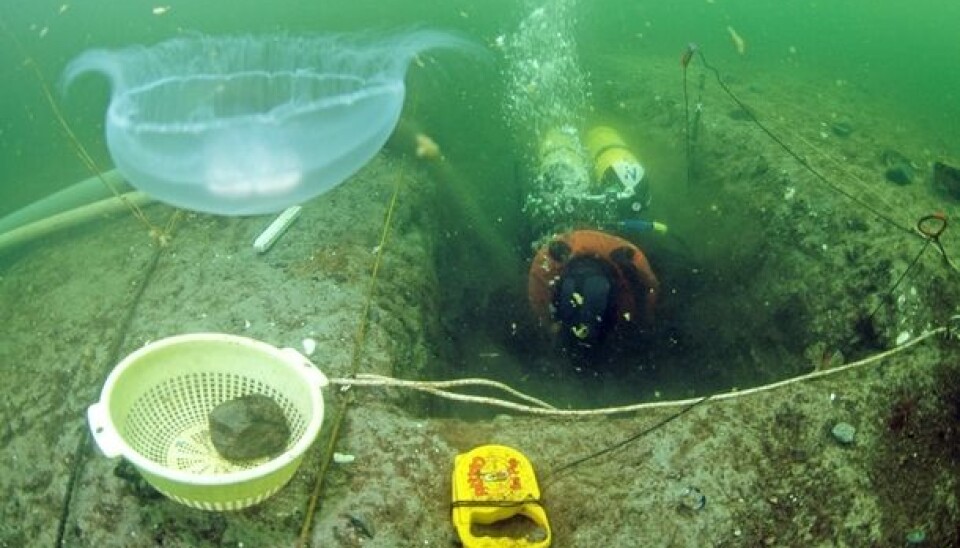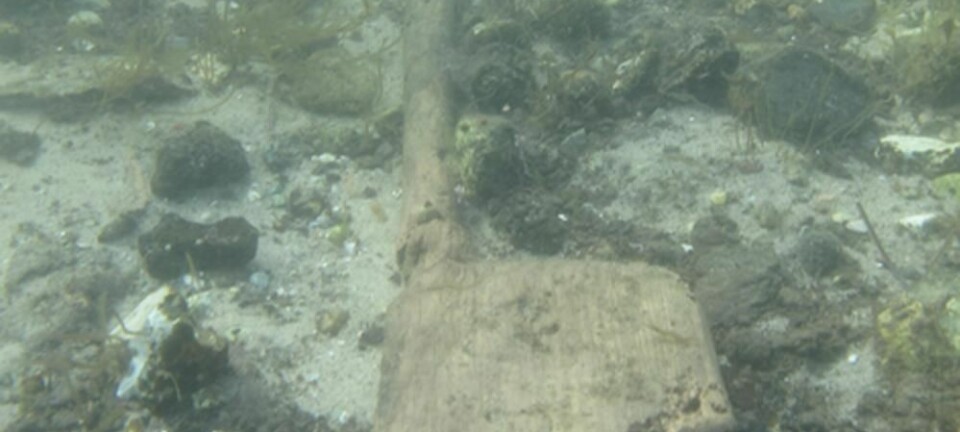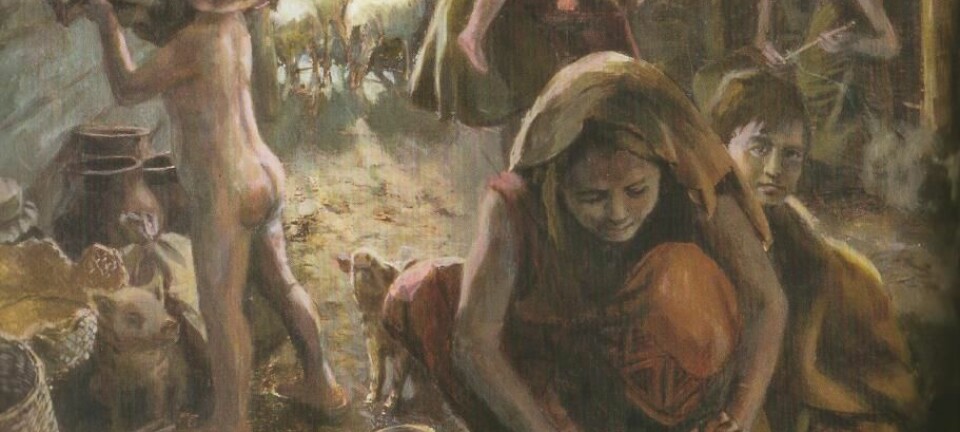
Low carb diets rocked in the Stone Age
The Neolithic population of Northern Europe maintained a diet based mainly on hunting and fishing even after agriculture became well established.
Denne artikkelen er over ti år gammel og kan inneholde utdatert informasjon.
Analyses of 6,000-year-old pottery reveal the culinary habits of Neolithic residents of today’s Denmark and Germany’s Baltic coast.
Traces of meals show a surprising penchant for fish, shellfish and marine mammals, also after plant cultivation and animal husbandry became well established in the region.
Transcribed to current fads the finds indicate that Stone Age people retained a lifestyle that continued to include a low carbohydrate diet based on hunting, fishing and gathering.
The cooking vessels of the time consisted of pottery and archaeologists have now analyzed 133 artefacts from the era shortly before, during and after agriculture was established in Scandinavia.

This occurred around 4,000 B.C.
Traces of food
Archaeologists can retrieve information about cooking from ancient ceramic vessels. They use chemical traces of fatty substances, lipids, in the ceramics.
The lipids tell whether the food cooked in the vessels was primarily from the sea or if it mainly had a terrestrial origin. They also reveal the use of milk products.
“I understand if people are surprised that we can get this information from a little shard of pottery. But these substances are present, no doubt about it,” says Archaeologist Oliver E. Craig at the University of York in the UK.
Craig carried out the study together with colleagues from Denmark, Germany and Great Britain.
Under water
He says that the organic compounds they analyze are very durable. These chemical indicators can even be detected at settlements that are now under the sea.
The study has also included a number of artefacts with carbonized residues of cooked food on their surfaces. Together these show that a good portion of the cooking vessels were used to prepare meals from fish, shellfish and sea mammals.
Researchers find traces of milk and can differentiate between marine resources and terrestrial animals.
It’s harder to differentiate between different types of meats. The cooking vessels don’t reveal for instance whether Stone Age stews consisted of beef or venison.
Nor does the study reveal how much grain or other agricultural crops were used.
Early ceramics
Ceramics were first used in Scandinavia prior to the so-called agricultural revolution, which had its origins from livestock and grains first bred and cultivated in the Middle East.
This makes it possible to compare cooking vessels from before and after Neolithic people started engaging in agriculture.
The interest archaeologists have in this isn’t linked to contemporary tabloid crazes about nutrition and diets. They want to find out whether the transition to agriculture can really be called a revolution, defined by a massive change-over to new methods of rustling up something to eat.
Oliver E. Craig at the University of York says there is no doubt on the one hand that Neolithic human society was radically changed by the adaptation of agriculture. This is evidenced by the things people made and by the ways they buried their dead.
On the other hand, lives of Stone Age people in this part of the world weren’t changed as much by agriculture as many have thought.
Good conditions for hunting and fishing
Genetic studies and analyses of Neolithic skeletons have confirmed notions about a rapid transition to agricultural diets and a comprehensive solution involving livestock, grains and new tools.
The 6,000 year-old cooking vessels tell a different story – fishing and hunting continued to play a major role after a farming culture took root.
Researchers think the entire situation can be described as a mixed economy.
They conceive of two solutions. New tribes of people who kept cattle could have reached the coast and started to fish, hunt and gather marine resources.
But alternatively the old, hunter-gatherer culture on the coast could have adapted agriculture through contact with farmers further south in Europe, while retaining some of their traditional lifestyle, effectively becoming fishermen-farmers.
Lacking finds
Craig is hard put to say whether the same picture applies to Norway. He thinks diverse regions of Scandinavia could have undergone different developments and these need to be analysed individually.
Norwegian archaeologist Leif Inge Åstveit at the University Museum of Bergen says finds of ceramics are scarcer in Norway than in Denmark and relatively few studies of this kind have been made here.
Agriculture emerged in Norway later than in Denmark and Åstveit agrees that Scandinavia is a patchwork quilt of diverse Neolithic cultures.
“My studies of the Stone Age in Norway have generally focused on the west coast. Here we see that hunting and fishing were important in combination with agriculture,” says Åstveit.
He has found surprisingly high figures for marine lipids in ceramics from the west coast, but also traces of milk fats.
Ceramics were also used in the hunter-gatherer societies in Norway before the emergence of agriculture. Archaeologists used to assert that the development ceramics pivoted on the adoption of agriculture, but this has been disproved by finds in many parts of the world.
--------------------------
Read this article in Norwegian at forskning.no
Translated by: Glenn Ostling


































